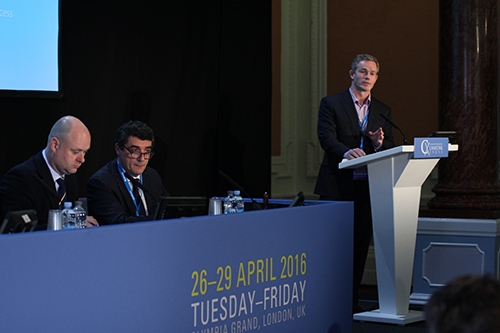
The new CX Vascular Access Course began yesterday with a masterclass on vascular access-induced ischaemic steal syndrome. Exploring the mechanisms and pathophysiology of ischaemia in vascular access, the ultimate target of the course was to start the production of a consensus document on the contested subject.
The masterclass also covered areas such as preoperative prediction, how to avoid ischaemic steal syndrome, and non-invasive evaluation of vascular access ischaemia, among other important topics in this area. Speaking to CX Daily News, chairperson and course director Domenico Valenti said: “The final aim after this is to produce a consensus document with all of the subject’s experts, to be published in a peer-reviewed journal.”
He continued: “This year’s session is important because it is the first time in a vascular access congress that we have created a focused masterclass. We have invited the experts in the field, including those who developed the novel surgical techniques used all over the world.”
The masterclass began with a presentation by Harry Schanzer (New York, USA), who reported that ischaemia steal syndrome was a “very common finding”, noting that it is found in around “70% of arteriovenous fistulae and 90% of arteriovenous grafts. However, he added: “In most of these cases, collateral circulation compensates for this reversal of flow and the patients do not have symptoms (physiological steal)”.
According to Schanzer, 80% of patients with clinical steal syndrome present early with regards to the creation of the arteriovenous access (<1 month) and the remaining 20% present late (>1 month). He said: “In the early cases, the contributing factors can be arterial inflow stenosis, poor collaterals or poor run-off. In the late cases, there is also high access flow as well as these three factors. Symptoms can go from mild (coldness, mild paraesthesia) to moderate (pain in the distal extremity during dialysis, more severe paraesthesia, motor weakness) to severe (rest pain, paralysis, tissue loss).” Treatment depends on the severity of the symptoms and can go from observation to intervention. “When comparing different therapeutic techniques used for the treatment of ischaemic steal syndrome, it is imperative to describe the severity of the symptoms of the population being treated,” Schanzer commented.
In his talk on preoperative prediction and avoiding ischaemic steal syndrome, Matthias Widmer (Bern, Switzerland) commented that he preferred the term “vascular access-induced hand (limb) ischaemia” over “steal syndrome”. He added: “This complication of an access creation mostly affects patients with very arteriosclerotic vessels and/or high flow arteriovenous fistulas or grafts. Age >60 years, women, diabetes, previous vascular access procedures, peripheral arterial occlusive disease, upper arm arteriovenous fistulas and grafts are all clinical risk factors for the complication. Therefore, a meticulous clinical assessment prior to surgery is of the utmost importance.”
Widmer reported that an intraoperatively measured digital brachial index below 0.45 is highly predictive for developing vascular access induced hand (limb) ischaemia, noting: “To avoid such an outcome, it is a good option, in patients with a high risk for the complication, to choose a preventive strategy. For example, you could perform ‘prophylactic’ revascularisation using distal inflow in the elbow area or a proximal arterial inflow with veins or grafts in the upper arm.”
During this first day of the CX Vascular Access Course, other sessions focused on strategies for delivering and improving vascular access, new technologies in vascular access, and multidisciplinary cases. Today, the course provides opportunities for one-to-one practical tuition at several “skills stations” and tomorrow will see presentation of vascular access abstracts.







